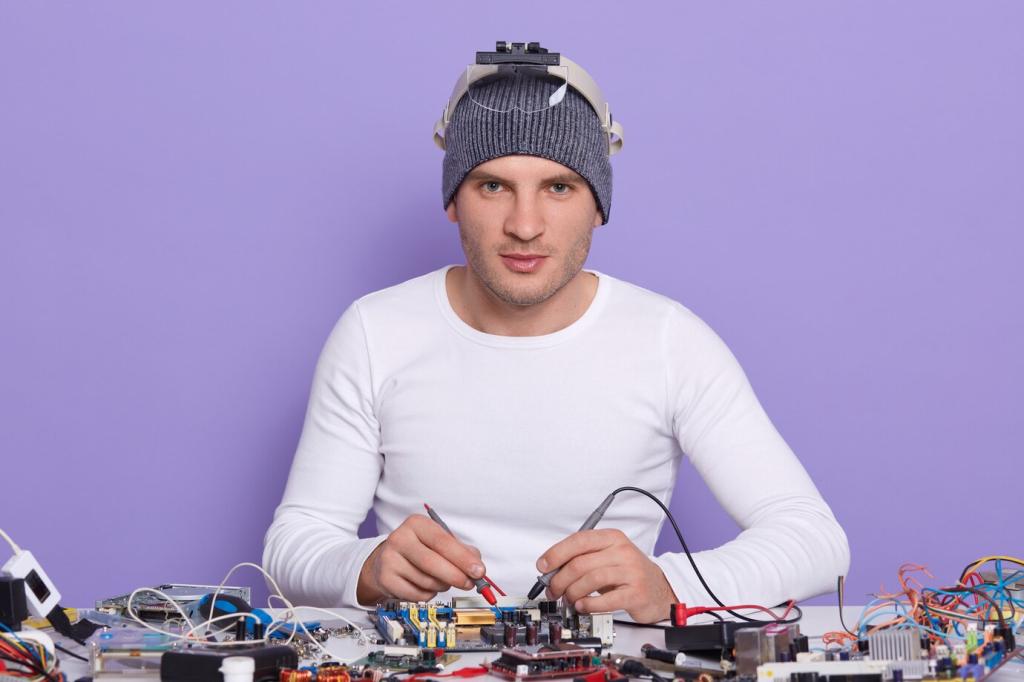Arduino-Based Distance Measurement
Arduino-based distance measurement is an innovative method that leverages the versatility and accessibility of Arduino microcontrollers to determine distances with impressive accuracy and reliability. This technology is commonly implemented for projects requiring spatial awareness, obstacle detection, or automation within robotics, smart vehicles, and security systems. It enables users, ranging from enthusiasts to advanced developers, to utilize sensors that precisely gauge the space between objects or surfaces. By integrating cost-effective components and open-source software, Arduino-based solutions have become a standard educational and practical tool in exploring and applying basic engineering, coding, and measurement concepts.

Principles of Distance Sensing
Distance sensing with Arduino typically employs electronic sensors, such as ultrasonic or infrared sensors, that emit signals and calculate the time taken for those signals to reflect off a target and return. The Arduino processes this data by applying fundamental physics equations to determine the precise distance. This block underpins the entire measurement system, making core knowledge of signal transmission and reception crucial for reliable results. The flexibility of Arduino allows for the adaptation of these principles in projects, whether measuring proximity for a robot or gauging water levels in a tank.
Common Sensors Used in Arduino Distance Measurement
Several types of sensors can be utilized for distance measurement in Arduino projects, with ultrasonic sensors like the HC-SR04 and infrared distance sensors being among the most popular. Ultrasonic sensors operate by emitting high-frequency sound waves, while infrared sensors rely on light reflection principles. Choosing the right sensor depends on the application’s requirements, including range, environmental factors, and accuracy needed. Each sensor type offers unique characteristics and is suited to specific environments, with Arduino’s code libraries ensuring seamless integration and operation.
Measuring Techniques and Accuracy
Accuracy in distance measurement projects hinges on correct calibration, sensor positioning, and compensation for environmental variables such as temperature and obstacles. The Arduino’s programming capabilities allow for advanced filtering and averaging techniques that reduce noise and improve measurement reliability. Developers often refine the basic scripts, implement mathematical corrections, and run calibration procedures to ensure that readings reflect real-world distances as closely as possible. Proper technique development forms the foundation of any dependable Arduino-based measurement system.
Applications of Arduino-Based Distance Measurement
In robotics, accurate distance measurement is vital for successful navigation, object avoidance, and mapping. Arduino-based solutions enable both simple robots and sophisticated automated vehicles to sense their surroundings, adjust movements, and perform tasks without human intervention. The real-time data collected from distance sensors helps algorithms determine safe paths, identify obstacles, and even assist in more advanced behaviors like following or tracking objects, significantly enhancing a robot’s functionality and autonomy.

Setting Up an Arduino Distance Measurement System
Choosing the right Arduino board and distance sensor is paramount to a successful measurement system. Factors such as desired range, required accuracy, and project complexity guide this selection. Some projects might call for a basic Arduino Uno with an ultrasonic sensor, while more advanced applications could integrate multiple sensors and more powerful microcontrollers. Understanding the specifications of each component ensures that the hardware can meet the demands of the intended application, supporting reliable and efficient measurements.
